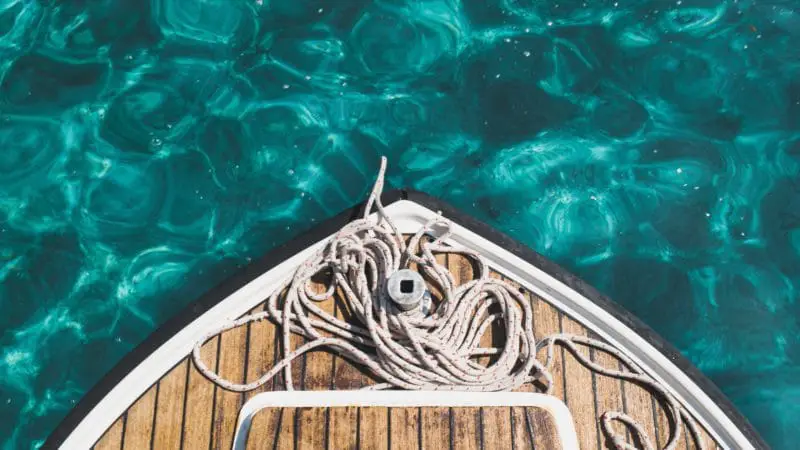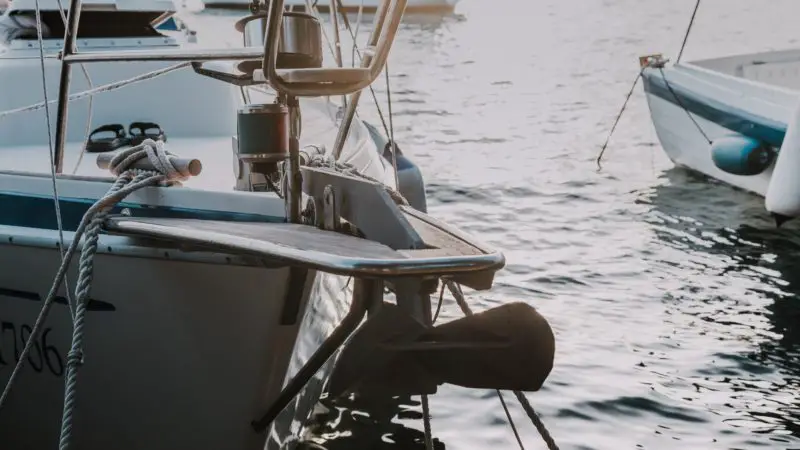How to choose the best winch for your sailboat?

Essential parts of modern sailboats, winches contribute as much to the pleasure as to the safety of sailing. The current operating principles date back to the 60s and have changed little since. Recently, major manufacturers Lewmar, Harken, Andersen and Antal have updated their product lines with models that are easier to disassemble and maintain.
The winch is not a wearing part, it is made to last. Regular maintenance and a few gestures of attention on each ride translate into decades of good and loyal service. However, inevitably, the time has come to change the winches on your sailboat and ask yourself the question: which winch to choose?
Before buying a winch, in particular to install a new one, ask yourself what it will be used for hoisting the mainsail, tucking it, mounting the tender, tensioning the cunningham, etc. Its lifespan will be counted in decades and the investment is not negligible, it is therefore recommended to make a comparative study.
Keeping as a rule of thumb that the bigger a winch, the better it will perform, browse our guide on how to choose your winches for your sailboat.
Contents of the page
Which size of winch to choose?
The size of a winch is given by its number which is also its power ratio. This is calculated for a standard 10 inch (25,4 cm) crank and corresponds to the multiplier to be applied to the power supplied by the user. An adult develops between 25 kg and 30 kg of power, so with a winch of 20 he will be able to tackle between 500 kg and 600 kg of tension.
To know which winch to choose, refer to the manufacturers' tables which give the recommended size according to the dimensions of the rigging and the applications: halyards or sheet, genoa, mainsail, spinnaker, etc. We have compiled a comprehensive article to help you choose the winch size suitable for your boat.
Also, take into account the fact that the higher the power ratio, the larger the dimensions of the winches: check the space available for its positioning and use (diameter of the winch, clearance for the handle for “wincher” without obstacles) .
Why choose a self-tailing winch?
Non-self-tailing winches are less common today and mainly concern racing yachts. They find their place when the finest adjustment of the sails is important and when crew members are available to pull the sheets.
Self-tailing winches are so convenient that they are recommended for any application. They allow a single person to embed a sheet or a halyard whatever the conditions. The self-tailing jaws are self-adjusting and accept a variety of string diameters.
If you are sailing solo or with a small crew, self-tailing winches provide you with comfort and safety.
How much speed to choose on a winch?
Nowadays you can find up to four speeds on winches. The most common have one or two speeds. Beyond that, they are often intended for large racing yachts.
Changing gears allows you to increase the power developed with the crank to the detriment of the tacking speed: you can absorb greater tension forces, but you edge the wing less quickly.
Winches at a speed
The most economical, winches at one speed typically have a 1: 1 gear ratio with direct drive one turn of the crank is one turn of the winch. They are suitable for sheets, cunninghams or halyards on medium sized sailboats and below.
Choose them with anti-kickback pawls, you engage by "pushing and pulling" and not just by making full turns with the crank.
Two-speed winches
Two-speed winches are often the main winches for halyards and sheet tackles on larger sailboats. With the fast speed, you get on as quickly as possible, then switch to slow speed when it gets harder. To switch from one to the other, simply reverse the direction of rotation of the crank.
Which winch material to choose?
Stainless steel is the ideal material, but it is also one of the most expensive. Look to anodized aluminum or chrome bronze for lower prices. Aluminum requires more maintenance: it is susceptible to corrosion and you must be careful of contact with stainless steel (carefully insulate the stainless steel screws securing the winch to the deck).
More expensive or rare, opt for bronze winches, robust they are often used on classic boats. If weight is your main concern, look for composite winches.
Which brand of winch to choose?
The main manufacturers are Harken, Lewmar, Andersen and Antal and their latest models offer easy maintenance and disassembly. It is your budget, design and features that you want will depend on how to choose a winch in their offers.
Andersen winches
Andersen only manufactures winches with stainless steel stubs to avoid any risk of oxidation. Their winches are top of the range and are all very aesthetic. The Classic range concerns non-self-tailing winches, the rest of the models being self-tailing. You can find out more in our guide: Reviews of Andersen winches.
Lewmar winches
Lewmar winches are more accessible to purchase and are the most common in the world. 'Lewmar Ocean' winches have forged a solid reputation for the brand and their latest 'Evo' range is still a step up. Lewmar's offer covers all uses, and is the only one to offer a reversible electric winch model allowing sails to be struck.
Below you can find a summary of the latest Lewmar Evo Winches by size and color:
Harken winches
Harken is a reputable manufacturer who is the only one to offer the full range of materials in the catalog: carbon, bronze, stainless steel, stainless steel / aluminum, chrome or aluminum. Harken winches are probably the second most popular after Lewmar winches. We wrote a comparison between Lewmar and Harken winches to help you choose.
See the Harken two-speed self-tailing Winches:
See Harken Winches at Speed:
Antal winches
Antal, an Italian manufacturer generally a little more expensive, has regatta (aluminum) and cruise (aluminum or chrome) ranges. We have written an article to give you our complete opinion on the winch manufacturer Antal.
See Antal self-tailing winches:
See Antal non self-tailing winches:
Antal is best known for its small winches with or without the use of a crank.
See Antal winches without handle.
Why choose an electric or hydraulic winch?
Electric and hydraulic winches reduce the physical effort required to trim or hoist the sails. This translates into an additional cost compared to manual models.
Electric winches are the most common, you have the choice of models with motor on the deck (in a compact cylindrical box under the winch headstock) or under the deck (allow for the space available for the electric motor directly above the deck. winch). Check that your boat can withstand the 50 A to 150 A power required for them to operate.
If you are tempted by the electric, the Rolls Royce of winches in this segment is the Andersen range (on the other hand you have to plan a significant budget!):
- See the Andersen 28ST electric winch
- See the Andersen 34ST electric winch
- See the Andersen 50ST electric winch
More affordable, you can also consider Harken's electric winches which are just as reliable.
If your boat is already equipped with Lewmar winches, then you can simply convert your manual winches to electric winches. Indeed Lewmar offers very practical connection kits! You just have to choose the kit adapted to the size of your manual winch:
- Connection kit for Lewmar winch 34ST Ocean
- Connection kit for Lewmar winch 40ST Ocean
- Connection kit for Lewmar winch 44ST Ocean
- Connection kit for Lewmar winch 46ST Ocean
- Connection kit for Lewmar winch 48ST Ocean
- Connection kit for Lewmar winch 50ST Ocean
- Connection kit for Lewmar winch 54ST Ocean
- Connection kit for Lewmar winch 55ST Evo
Finally, if you do not have the means to equip yourself with electric winches, you can always consider electric winch handles. We wrote an article on the subject if you don't know how they work: Our opinion on electric boat winch handles.
Regarding hydraulic winches, they are generally intended for boats over 50 feet and require a hydraulic motor. Given the complexity, call a professional for the choice and installation.
Last tip for choosing the right winch without breaking the bank
Each purchase of a winch is a special case. How to choose a winch depends on its use, your style of navigation, your budget or the available space. To reduce the bill, shop for used winches. A simple search on Amazon allowed us to find used Antal winches or even Lewmar much cheaper than new ones. Ebay et CDiscount from time to time also have good opportunities.
This equipment is built to last, so you can find cheap second hand winches that just need a good cleaning to be like new again.
To give them a second youth, we advise you to bring:
- an cleaning liquid for degreasing removable parts
- by grease for winch (for pinions and axles)
- by oil for ratchets, springs and bearings
- and a Spare kit (repair kit in case there are damaged springs or pawls).
Choose it according to the brand of your winches:
View HARKEN winch repair kit.
View LEWMAR winch repair kit.
If you wish, you can also opt for a compact maintenance kit who will stay on board.
NB: if you do not know how to disassemble and maintain a winch, you can refer to our article: How to easily dismantle a winch on your sailboat?
Whatever your choice, do not forget to protect your winches with a cover when arriving at the port to extend their lifespan. Below is a list of covers depending on the size of your winches:
- Winch cover 133 mm
- Winch cover 148 mm
- Winch cover 164 mm
- Winch cover 180 mm
- Winch cover 197 mm
- Winch cover 213 mm
- Winch cover 228 mm
- Winch cover 250 mm
- Winch cover 285 mm
- Winch cover 315 mm
How to choose the right accessories for your winches?
Once your winches have been purchased, you will need cranks to make them work! The most important thing is to choose the right crank size for the space available on your boat (200mm or the traditional 250mm). Then you just have to decide if you prefer to winch with a standard handle, with a pommel or with two hands. The latest innovation being the 'one touch' which allows the winch handle to be released with just one hand.
| 250 mm crank | 200 mm crank |
| One Touch Crank | One Touch Crank |
| Crank with Knob | Crank with Knob |
| Standard crank | Standard crank |
| Two-handed crank |
Finally, you will need to equip yourself with crank pockets. Generally, you have to count one handle per winch so plan for as many pockets!
Finally, it is recommended to always have on board a repair kit for your winches but also a repair kit for its cranks!
Last tip, we recommend that racers or future team members wear gloves if you don't want blisters! Choose them according to the season:
To find out more about boat winches:
Our comparison of the best brands of boat winches

